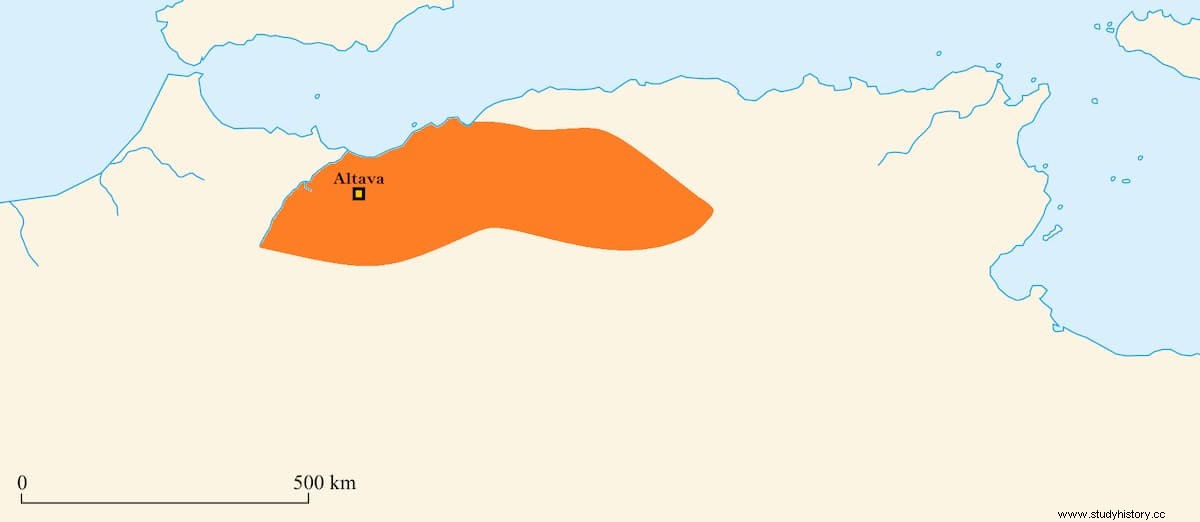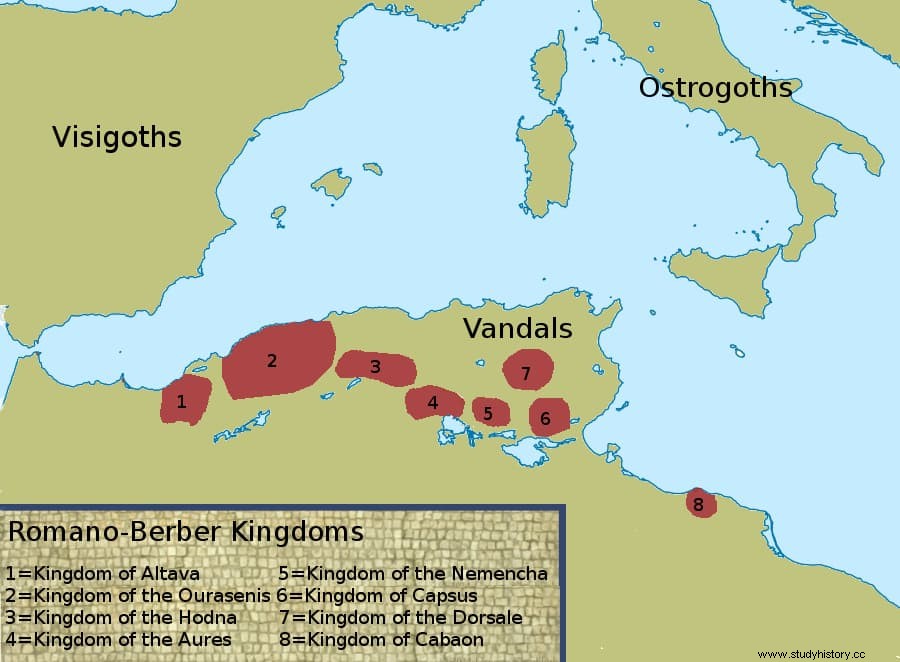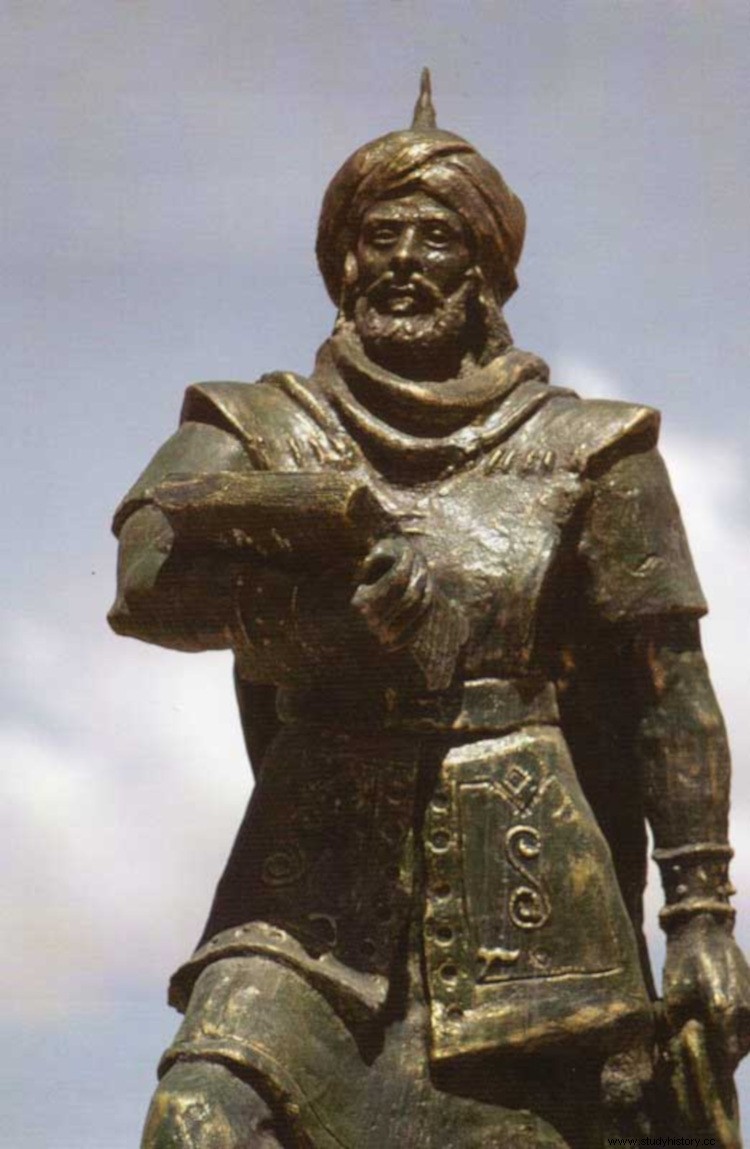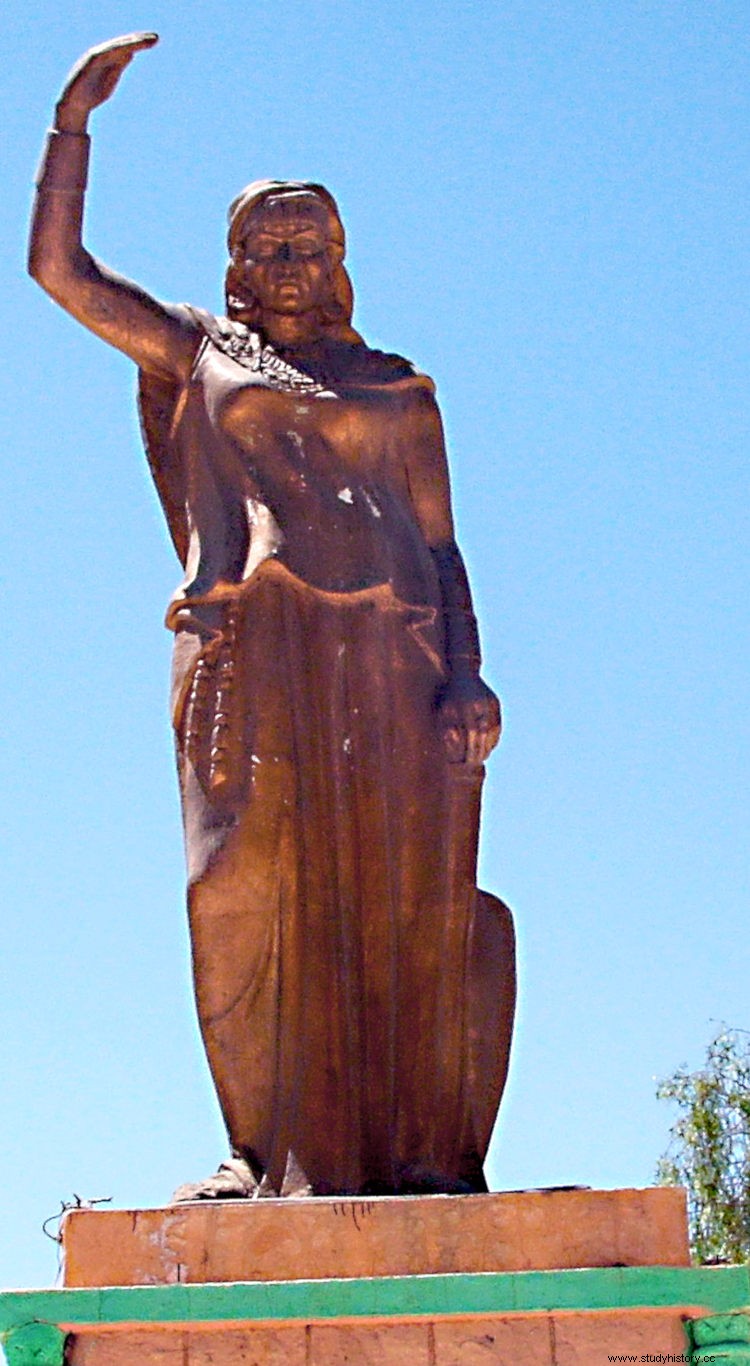Altava is an archaeological complex located next to the city of Ouled Mimoun, in the extreme northwest of Algeria, in the province of Tlemcen. It is what during the French stage was known as Lamoriciere and that in the 6th century AD. It was the capital of the state that succeeded the Mauro-Roman Kingdom which, in turn, had taken over from the Roman province of Mauritania Cesariense. It was then called the Kingdom of Altava, which managed to remain as such until 708 A.D.
It was a Berber state that emerged from the conquests of that North African people, taking advantage of the Roman collapse in a region that, in any case, the empire had not managed to fully dominate, limiting its control to the coastal area. That meant that Rome focused its attention on cities of a certain entity such as Caesarea (current Cherchell, in Mauritania Cesariense or eastern) or Septum (current Ceuta, in Mauritania Tingitana or western), although their lifestyle did influence enough to that culturally it was a Romanized area and submitted in practice.
Altava was on the route between the Numidian city of Theveste and that of Numerus Syrorum (today called Maghnia), and had a garrison made up of the Cohort II Sardorum , in charge of keeping the road clear Nova Praetentur a, which linked the two localities mentioned with Rapidum. In fact, Altava was born as a vicus , that is, a neighborhood that emerged from the military settlement to which it was attached until it acquired its own entity; in his case, it came to have its own forum and a temple that would later be converted into a church, since the castrum it stretched for thirteen hectares and was surrounded by farms.

Mauretania Cesariense, established by Claudius in the first century over the former Numidia, would survive until its official dissolution in the seventh but collapsed two before, when, after the crisis of the third century, Rome had to focus its resources on dealing with civil wars and defend priority sites, thus weakening their power in North Africa. The Berber tribes took advantage of the occasion and united in a confederation that began to occupy territories; Maximian, seeing the danger, faced it with a strong offensive between 297 and 298, pushing those peoples into the desert and entering Carthage with the title of Redditor lucis aeternae (restorer of eternal light).
But the nomadism of those people made it difficult to deal them a definitive blow. In the year 477, with the fall of the Western Roman Empire, its authority was replaced by that of the aforementioned Mauro-Roman Kingdom. We said before that these Berbers were quite romanized and had been used as foederati Hence, they kept a good part of their legacy and rose up against the occupation carried out by the Vandals, as soon as their king Genseric died. The monarch's successors tried to retain Mauretania Caesarea and establish Arianism, but failed and a Berber ruler named Masuna proclaimed himself Rex gentium Maurorum et Romanorum .

We do not know anything about Masuna because the only reference that remains is an inscription from the year 508, from which it is deduced that he reigned over Altava, Castra Severiana and Safa, since he appointed officials for them. However, he should not have been the only one to proclaim himself sovereign, since there is also evidence of the existence of Masties, who around 516 named himself Imperator of the Kingdom of the Aures, and there were others smaller, if not in size at least in importance. In any case, Procopius speaks of a certain Massonas (presumably Masuna himself), who entered into an alliance with the Eastern Roman Empire in 535 and received the help of the famous general Belisarius to continue eating ground from the Vandals.
That year Masuna died and Mastigas (or Mastinas) inherited the throne, who extended the control of the kingdom to the entire former Mauretania Cesariense with the sole exception of Caesarea, which remained in the hands of the Eastern Romans. Apparently, the Berber state functioned completely independently, although recognizing the authority of Constantinople (even when there were increasingly frequent clashes between the two), hence the rulers were sometimes called dux instead of rex . The last of the royal list was Garmul, who openly fought the Romans, taking advantage of the fact that they also had problems with the Visigoths in Hispania; he would end up defeated by the magister militum Gennadius.
The death of the vanquished Garmul in 578 marked the collapse of the Regnum Maurorum et Romanorum , which was annexed to the Eastern Roman Empire and transformed into the Exarchate of Africa. Part of the territory was atomized into small kingdoms such as those of the Ouarsenis or the Hodna, who were Berber but Romanized and Christian; however, the most important was the Kingdom of Altava. Unfortunately, there is hardly any news about it except that it owed its name to the city that Garmul had designated as its capital. For most of his period, specifically between the years 578 and 670, there is no data and it is necessary to wait until the second date to finally find the name of a ruler:Sekerkid the Roman .

The truth is that not much is known about him either; only he was someone of Roman descent, judging by his nickname. Details of his stage and how long he reigned are unknown, but he abdicated at an uncertain date, presumably in 680, to a tribal chief named Kusaila or Kasila (Aksil in the local language). This, often latinized as Cecilio, was the head of the Sanhaya (or Zenaga) Confederation, a group of Berber tribes that brought together the Zanata, Masmuda and Auraba. His most prominent role in history is having made a valiant effort to resist the Muslim expansion of the Umayyad Caliphate, since he and his people were still culturally influenced by the Byzantines and, let's remember, they were Christians.

Late sources say that Kasila was invited by the caliph Abu al-Muhajir to convince him to embrace Islam and join him -who was also a convert-, guaranteeing him in exchange the equality of his own and the Arabs; there was suspicion in this sense because it was thought that the new faith was exclusively from Arabia. He finally accepted and all went well, in close collaboration, until his sponsor passed away and he was replaced by Okba ibn Nafi, a proud man who treated the drinkers with contempt. Kasila considered the deal broken and joined the Byzantines to defeat the Arabs at the Battle of Vescera in 683, expelling them to the east of Tunisia for a decade and remaining the absolute master of North Africa.
On the other hand, the sources closest chronologically to the events do not speak of any agreement between Kasila and the caliph or of a conversion, although they do speak of the victorious combat and alliance with the Byzantines. According to the same version, five or seven years later the Umayyads returned and prevailed in the Battle of Mamma, in which Kasila himself fell. The Berbers continued to resist the Muslims with the bulk of the irreducible entrenched in the Aurés Mountains (the Algerian extension of the Atlas), the same ones that had once served as a bastion against the Romans and Vandals.

But, by then, the Kingdom of Altava no longer existed de facto , even when their new leader presented herself as queen. It was about Dihia (or Dahia), a warrior chief of the nomadic Yarawa tribe whom the Arabs called al-Kāhina (sorceress or augur), despite the fact that she also professed Christianity, because they believed that she could divine the future, since according to the sources it had characteristics that used to be attributed to that capacity. She was already old -and a widow-, although she kept her beauty, long hair and had three children. Dihia claimed several victories against the Islamics, but in 698, when they defeated the Byzantines at Carthage and gained this strategic base of operations, many abandoned her cause as lost.
Her strength weakened, Dihia was defeated and had to flee to the Greek city of Tarfa, where she was caught up and according to some she died fighting, according to others she took her own life and a third version says that she fell prisoner . Before she died, the legend tells of her, she saw that a new era was beginning and asked her children to embrace Islam, joining her enemies. Indeed, she did have something of a visionary because the Mediterranean was going to be radically transformed with the dazzling expansion of the Mohammedan faith.
